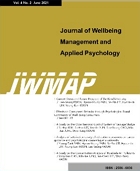- Log In/Sign Up
- E-ISSN2586-6036
- KCI
 E-ISSN : 2586-6036
E-ISSN : 2586-6036
Su-Hye KIM
Woo-Taeg KWON
Abstract
Purpose: Since the food wastewater contains a high concentration of nitrogen, it is very important to find a way to efficiently remove it. Research design, data and methodology: A total of four experiments were conducted under different conditions to remove ammonia nitrogen present in the food wastewater. The experiment was designed by adding sodium hypochlorite to the raw food wastewater and varying conditions such as pH control, aeration/precipitation, and stirring. Results: The ammonia nitrogen removal rate in Experiment 1 was about 12% (sodium hypochlorite added), ammonia nitrogen increased about 4.7% in Experiment 2 (sodium hypochlorite added after aeration/precipitation in a bioreaction tank, stirring), and decreased about 52.5% (sodium hypochlorite added after controlling and stirring). Conclusions: When the concentration of sodium hypochlorite was high, ammonia nitrogen was best removed, and the pH was adjusted to 12, and sodium hypochlorite was added after stirring, and the removal was the second best. If the method of this study is further studied and developed, it can be basic data for ammonia nitrogen removal in the future.
- keywords
- Food Wastewater, Ammonia Nitrogen, Sodium Hypochlorite, Chemical Treatment
- Downloaded
- Viewed
- 0KCI Citations
- 0WOS Citations













